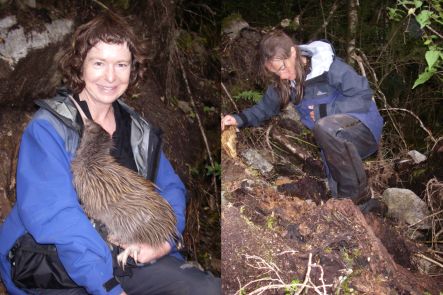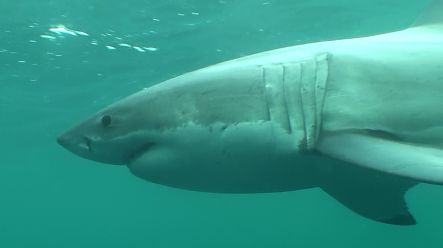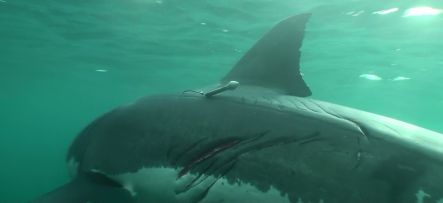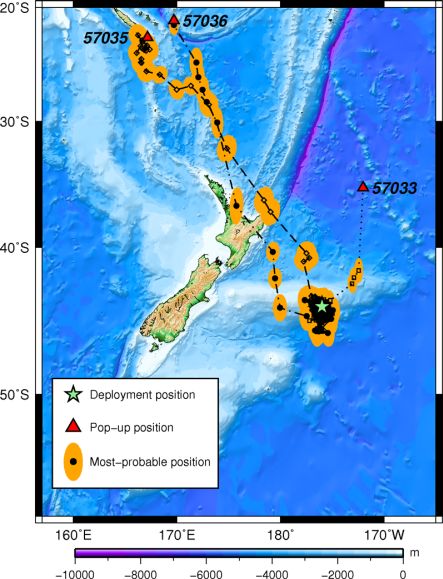Our Changing World for Thursday 16 July 2009
Fiordland Kiwi

Alison Ballance holding sub-adult Northern Fiordland tokoeka, and Jane Tansell looking for kiwi in daytime roost under log jumble (images: A. Ballance)
Tokoeka (Apteryx australis) are thought to be the most primitive kiwi in New Zealand. There are four distinct geographical forms: Haast tokoeka, Northern Fiordland tokoeka, Southern Fiordland tokoeka and Stewart Island tokoeka. The tokoeka in Fiordland were thought to be the same as those found on Stewart Island, but in 2006 new genetics research showed they are separate from the Stewart Island birds, and there are also separate taxa in northern and southern Fiordland, with a zone of mixing near Lake Manapouri. Jane Tansell from the Department of Conservation has been involved in monitoring northern Fiordland tokoeka in the Murchison Mountains, better known as the home of takahe. The survival and nesting success of radio-tagged adult male birds and sub-adult birds was followed over five years.
High Temperature Superconductors

Bob Buckley and some high temperature superconductor cables (image: IRL)
When refrigerated to cryogenic temperatures, high temperature superconductors (HTS) have some pretty cool properties. Unlike conventional wires made of copper, HTS wires have virtually no resistance and can therefore carry much greater amounts of electricity through substantially smaller cables. Bob Buckley heads the HTS group at Industrial Research Limited where these superconducting materials are being developed, tested and then used in a variety of applications.
Great White Sharks

Male great white shark named Barney, Stewart Island (image: S. Banks/DoC)
Shark scientists Malcolm Francis, from the National Institute of Water and Atmospheric Research, and Clinton Duffy from the Department of Conservation run a collaborative research programme on New Zealand's great white sharks. Over the past five years they have attached satellite tags to 24 great white sharks at the Chatham Islands and at Stewart Island. All of the sharks tagged to date have headed north to the tropics at some time during winter or spring. While they are travelling they make frequent deep dives, some as deep as 1000 metres. This and other tagging studies overseas are showing that great white sharks are not a coastal species, but undertake frequent long-distance journeys across open ocean - this has important implication for the management of great white sharks in international waters.

Four-metre long female great white shark named Kara, with a satellite tag attached at Stewart Island in March 2009. The bite marks are presumed to be from another great white shark (image: S. Banks/DoC)

Routes taken by first three great white sharks tagged at the Chatham Islands in 2005. From Bonfil et al (in press).